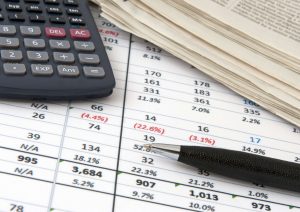Uncategorized
Mark to Market Overview, Importance, Practical Example

In a bull market with rising stock prices, their net worth may increase, and in a bear market with falling prices, their net worth will decrease. Mark-to-market accounting is prevalent, for instance, in the financial services industry, where assets like currency and securities are the backbone of the business. In marking-to-market a derivatives account, at pre-determined periodic intervals, each counterparty exchanges the change in the market value of their account in cash. For Over-The-Counter (OTC) derivatives, when one counterparty defaults, the sequence of events that follows is governed by an ISDA contract. When using models to compute the ongoing exposure, FAS 157 requires that the entity consider the default risk (“nonperformance risk”) of the counterparty and make a necessary adjustment to its computations. This helps us understand why mark to market accounting is much more efficient and accurate.

A trader would not file Form 8949 for the elected account; instead, Form 4797 should be filed. Traders who have both types of accounts (investor and trader) would file an 8949 and a 4797. Such disclosures, facilitated by MTM accounting, help investors make informed decisions and maintain confidence in the integrity of financial markets. As you can see, the MTM method is fulfilling its purpose of telling investors what the asset is actually worth as of the reporting date.
How Did Enron Use Mark-to-Market Accounting?
These distortions can be avoided, however, by redefining capital requirements to be procyclical rather than by abandoning fair value accounting and the other benefits that it provides. Therefore, the amount of funds available is more than the value of cash (or equivalents). The credit is provided by charging a rate of interest and requiring a certain amount of collateral, in a similar way that banks provide loans.
- However, the mark to market method may not always present the most accurate figure of the true value of an asset, especially during periods when the market is characterized by high volatility.
- In a bull market with rising stock prices, their net worth may increase, and in a bear market with falling prices, their net worth will decrease.
- Not only that, it shows a method of using generally accepted accounting principles (GAAP) as guidance on how to measure fair value.
- For example, mark to market accounting could have prevented the Savings and Loan Crisis.
- For instance, the replacement cost to build your home from scratch will be listed on a homeowner’s insurance, not the amount you originally paid for it.
- Due to this discrepancy, some accountants record assets on a mark-to-market basis when reporting financial statements.
In some cases, NRV of an item of inventory, which has been written down in one period, may subsequently increase. In such circumstances, IAS 2 requires the increase in value (i.e. the reversal), capped at the original cost, to be recognized. Reversals of writedowns are recognized in profit or loss in the period in which the reversal occurs.
What is the Origin of Mark to Market?
Although FAS 157 does not require fair value to be used on any new classes of assets, it does apply to assets and liabilities that are recorded at fair value in accordance with other applicable rules. The accounting rules for which assets and liabilities are held at fair value are complex. Mutual funds and securities companies have recorded assets and some liabilities at fair value for decades in accordance with securities regulations and other accounting guidance.
After the suspension of mark-to-market accounting, the method gained popularity again, often in the form of creative accounting, in the 1980s. It’s also believed to have contributed to a new set of financial scandals in the 1990s. That said, mark-to-market accounting has been a part of the Generally Accepted Accounting Principles (GAAP) since the 1990s. When oil prices dropped in 1986, the property held by Texas savings and loans also fell. That made it seem the banks were in better financial shape than they were.
Mark to Market in Futures Trading
Suddenly, all of the appraisals of their worth were detrimentally off, and mark-to-market accounting was to blame. In securities trading, mark to market involves recording the price or value of a security, portfolio, or account to reflect the current market value rather than book value. A bank or investing firm with a portfolio of investments, like tradable securities, may see its net worth drop precipitously as the companies it has invested in are failing. In reality, the picture of bank assets may not be as bleak, but the perception of depreciation may lead the institution to sell off their assets in order to increase their cash reserves.
- A serious financial crisis, such as the Great Depression following the stock market crash of 1929 or the Great Recession of 2008, can lead businesses to mark down their assets, since these assets have, after all, lost value.
- During times with high volatility or market dynamics like the ones we have been going through in the last two decades, the information must be adequate and fresh.
- The differences around costs and measurement between IFRS Standards and US GAAP can be difficult for companies to tackle as they switch between the two standards or conform acquired businesses to group costing policies.
- Proceeds from the sale would be accounted for in a manner consistent with the nature of the asset, which may be different from IFRS Standards.
- The latter cannot be marked down indefinitely, or at some point, can create incentives for company insiders to buy them from the company at the under-valued prices.
- A typical example of the latter is shares of a privately owned company the value of which is based on projected cash flows.
- That said, in this instance, that type of mark-to-market value does not provide an accurate picture of the homeowner’s true net worth.
Examples provided are for illustrative purposes only and not intended to be reflective of results you can expect to achieve. Dual preparers should carefully assess all differences to prepare a model that is efficient to maintain, most representative of their inventory values and compliant with all is mark to market accounting still used applicable requirements under both GAAPs. Unlike US GAAP, inventories are generally measured at the lower of cost and NRV3 under IAS 2, regardless of the costing technique or cost formula used. KPMG has market-leading alliances with many of the world’s leading software and services vendors.
AccountingTools
A provision may be necessary if the write down to net realizable value is insufficient to absorb the expected loss – e.g. if inventory has not been purchased or fully produced. In personal accounting, the market value is the same as the replacement cost of an asset. If you think your business could benefit from mark-to-market accounting, contact an Anderson Advisors tax expert today!

The crises occurred because banks recorded the original price they paid for assets, making adjustments in the books only when assets were sold. It’s easy to see why mark-to-market accounting can be used for assets with a high degree of liquidity, because the current market price of many of these assets is readily available, even to everyday retail investors. But for assets with a lower degree of liquidity, such as inventory, business equipment, or real estate, obtaining the current value of the asset can be more difficult and require the services of an appraiser. In some cases (real estate, for example), the IRS has laid out rules around how much an asset can depreciate, so guesswork or assessment is taken out of the picture. The debate occurs because this accounting rule requires companies to adjust the value of marketable securities (such as the MBS) to their market value.








